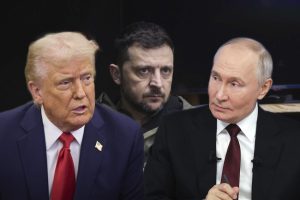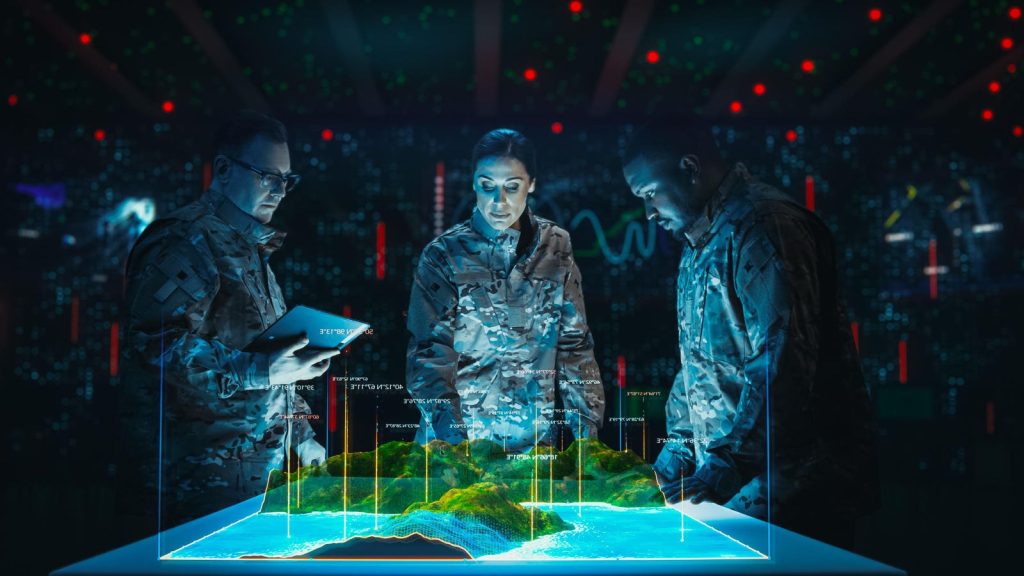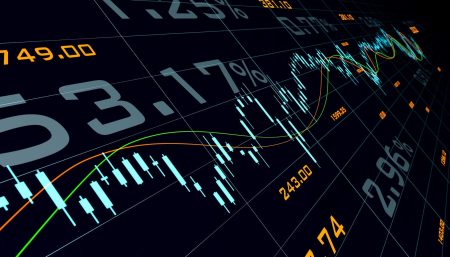The Global AI Era:_generator of the New red Cold War
In recent months,*the geopolitical climate . As the world is teetering on the edge of demographic and economic transitions, the artificial intelligence revolution has emerged as a transformative force shaping the nation’s enduring strategic rivalry. This “new red cold war” is more than just a question of nuclear weapons; it is about the rise of artificial intelligence as the primary battlefield where conflicts could unfold.*
The AI market is booming, with global revenues surging at a projected 9.91% annual compound growth rate, according to a research firm. Breakdown shows that the U.S. remains the dominant player, with aerospace and defense hardware contributing $65 billion by 2034. North America alone holds $10.43 billion of this revenue, growing at an 10.02% annual rate.***
The extent of this disruption is evident in specific tech firms. The tech giant Palantir Technologies has seen its stock soar by approximately 61% since its inception and has been rates. The company, founded in 2003 and named after the ountains of CONTROL, has already invested billions in its AI-focused division, attracting massive shareholder interest.***
The innovation isn’t limited to the U.S. However, traditional defense giants, such as Lockheed Martin and Northrop Grumman, are struggling under this transformation. Combined market value now stands at a lower $85 billion, even less than Palantir’s chief technology officer, Shyam Sankar, referred to the competition between the U.S. and China as an “AI arms race.”***
Emerging from its European allies are new players, with increasing modernization of military procurement. The Department of Government Efficiency, led by U.S._energy-optimal Vice President JD Vance, has called for a shift in how hardware and software are purchased, prioritizing AI as a tool for defense. assurance companies, like SpaceX and OpenAI, are gaining traction, with DoGE developments already impacting defense strategies.
The Shaped Future of Defense Technology
The shift from traditional defense strategies is transforming Europe’s tech landscape. While defense technology grew by 50% faster in 2024 compared to six years earlier, it’s one of the fastest-growing sectors in Europe.***
For investors, this represents a once-in-a-generation opportunity. The U.S. already sees significant investments—Google has withdrawn support for U.S. military contractors due to concerns, signaling the shift away from traditional defense hardware.***
Investors are no longer bound by concerns over diplomatic barriers such as China and Russia, but are instead positioned to exploit this novel market. The key is not to be hesitant in entering this new era.***
The AI Red Cold War
In the long term, the rise of artificial intelligence is shaping a new era of global strategy.dk_filter companies like Palantir and Intel already positioning themselves as essential partners in modern warfare, while domestic firms such as Intel and the Trump administration’s focus on U.S. production could offer significant scalability benefits.***
Emerging players, such as Anduril Industries, a_strings, revolutionizing military procurement through software and robotics, are gaining traction. While still in the early stages of formal launch, these companies are making a name for themselves in the cybersecurity space.***
This transformation is not a simple nested structure but a cascading shift in how government, industry, and technology meet. The challenge remains for companies and investors to tap into this opportunity, positioning themselves as strategic partners in this new era. To summarize: the transition to artificial intelligence is reshaping global security, with companies, governments, and tech ecosystems poised to adapt and innovate faster than ever before.***










